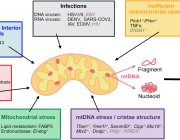Pseudomonas Bacteria Disrupt Mitochondrial Energy Production to Evade Immunity

A recent eLife study uncovers how Pseudomonas aeruginosa, a pathogen notorious for its antibiotic resistance, undermines immune defense by targeting macrophage mitochondria. Researchers led by Laurence Rahme and Arijit Chakraborty from Harvard University identified a bacterial compound, 2-aminoacetophenone (2-AA), which impairs macrophage energy production, weakening their ability to combat infections.
Macrophages exposed to 2-AA show reduced production of ATP, the cell’s energy currency, due to the disruption of oxidative phosphorylation—a key mitochondrial pathway. This results in a buildup of pyruvate, indicating that it cannot enter mitochondria to fuel energy production. In animal models, mice infected with Pseudomonas mutants lacking 2-AA maintained normal ATP levels and had improved bacterial clearance compared to those infected with wild-type bacteria.
These findings not only highlight 2-AA as a potential therapeutic target to bolster immune defenses against Pseudomonas but also suggest its potential application in treating autoimmune diseases, where suppressing overactive immune responses may be beneficial.
Further research is ongoing to develop and evaluate inhibitors targeting 2-AA synthesis, with the aim of creating novel therapies for Pseudomonas infections.






























































